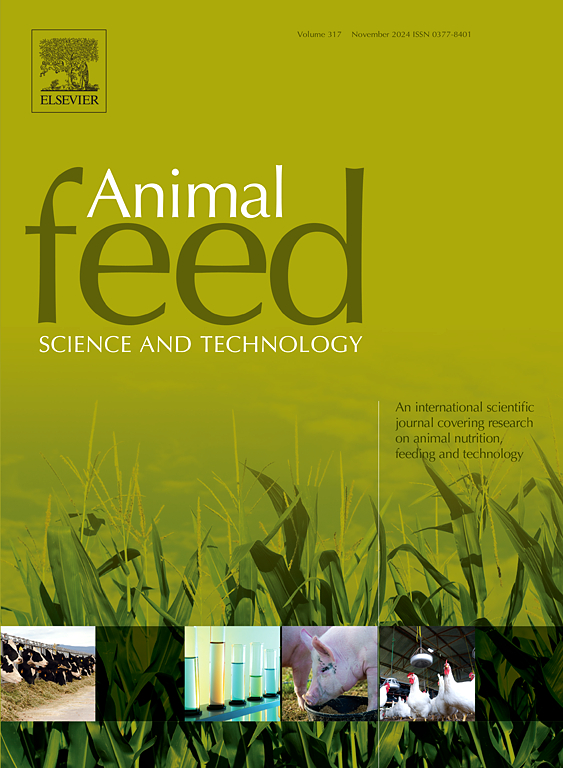Factors affecting the occurrence of cyclopropane fatty acids in grass silage
IF 2.5
2区 农林科学
Q1 AGRICULTURE, DAIRY & ANIMAL SCIENCE
引用次数: 0
Abstract
Haymilk and haymilk products meet the consumers expectations about traditional and sustainable dairy farming and have gained increasing interest in some parts of Europe. In haymilk production, among other restrictions, fermented feed is not allowed in the ration of cows. Recently, advancements in analytical methods applicable to dairy products have emerged, enabling the detection of silage utilization in animal diets. Notably, cyclopropane fatty acids (CPFAs), such as dihydrosterculic acid (DHSA) (cis 9,10-methylene octadecanoic acid) and lactobacillic acid (LBA) (cis-11,12-methylene octadecanoic acid), have been identified as biomarkers capable of distinguishing between Grana Padano and Parmigiano Reggiano cheeses. Silage is permitted in the production of the former but prohibited for the latter. Consequently, these biomarkers allow authentication by confirming the absence of silage in the animals' diet. CPFAs are known to be produced by some microorganisms during fermentation in silage production, thus they are expected to occur only in milk of animals fed silage. Most of the previous studies in this area referred to lowland areas, where the fermented part of the dairy cows' diet typically consists of maize silage. However, in the mountainous areas of the Alps (Europe) the diet often includes on-farm produced grass silage, which only recently came to the attention of research concerning the authentication of dairy products based on a silage-free diet. In this work, grass silage was produced under controlled conditions to test the formation of CPFAs depending on the growth cycle (cut), fermentation temperature and the use of fermentation starters. In addition, 69 silage samples of several farms were collected and studied to investigate the relationship between silage quality and the CPFAs content under on-farm conditions in the local practice. The concentration of CPFAs were found to be differently affected by the temperature, depending on the cut, whilst the starter only marginally affected CPFAs. A positive relationship between acetic acid and CPFAs was observed both in laboratory-produced silages and in on-farm collected grass and maize silages. These results provide a first insight into the presence of CPFAs in grass silage and its association with fermentation parameters adding new helpful information in using CPFAs as markers to authenticate milk from a silage-free diet.
求助全文
约1分钟内获得全文
求助全文
来源期刊

Animal Feed Science and Technology
农林科学-奶制品与动物科学
CiteScore
6.00
自引率
6.20%
发文量
266
审稿时长
3 months
期刊介绍:
Animal Feed Science and Technology is a unique journal publishing scientific papers of international interest focusing on animal feeds and their feeding.
Papers describing research on feed for ruminants and non-ruminants, including poultry, horses, companion animals and aquatic animals, are welcome.
The journal covers the following areas:
Nutritive value of feeds (e.g., assessment, improvement)
Methods of conserving and processing feeds that affect their nutritional value
Agronomic and climatic factors influencing the nutritive value of feeds
Utilization of feeds and the improvement of such
Metabolic, production, reproduction and health responses, as well as potential environmental impacts, of diet inputs and feed technologies (e.g., feeds, feed additives, feed components, mycotoxins)
Mathematical models relating directly to animal-feed interactions
Analytical and experimental methods for feed evaluation
Environmental impacts of feed technologies in animal production.
 求助内容:
求助内容: 应助结果提醒方式:
应助结果提醒方式:


